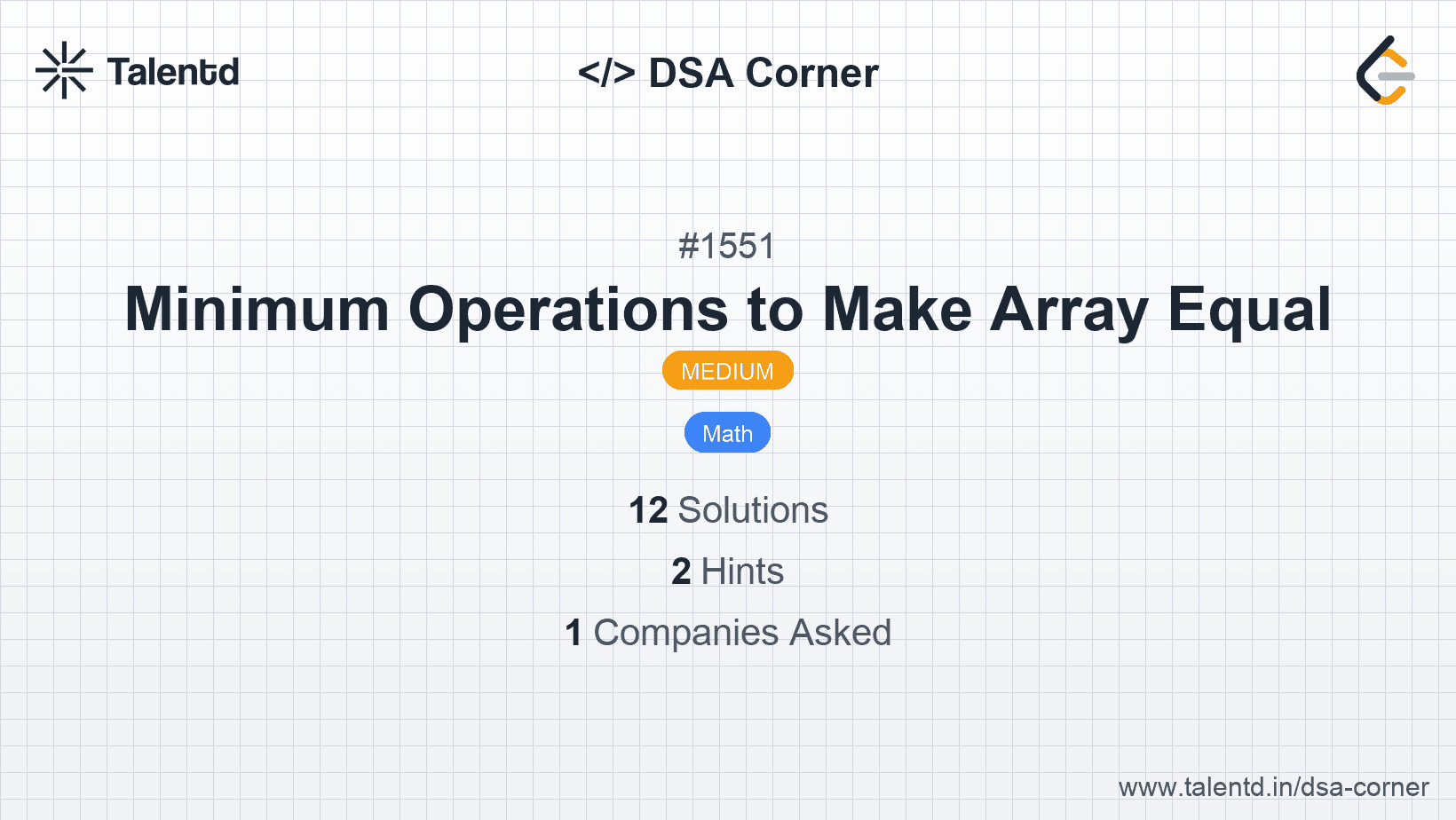
Sponsored
Sponsored
The array arr follows the pattern (2 * i) + 1, making it an arithmetic sequence of odd numbers. The median of the arithmetic sequence is the middle element for odd n and the average of two middle elements for even n. Since operations have to balance the values to become equal, the number of operations required is essentially the sum of steps needed to make the greater half equal to this median, iterating from the middle outwards.
Time Complexity: O(1), since the solution simply computes a formula.
Space Complexity: O(1), as no additional space is required.
1using System;
2
3public class Solution {
4 public int MinOperations(int n) {
5 int half = n / 2;
6 return half * (half + (n % 2 == 0 ? 1 : 0));
7 }
8
9 public static void Main(string[] args) {
10 Solution sol = new Solution();
11 Console.WriteLine(sol.MinOperations(3)); // Output: 2
12 Console.WriteLine(sol.MinOperations(6)); // Output: 9
13 }
14}This C# implementation calculates the required operations by considering the array's symmetric formation, enabling a straightforward mathematical solution to equalize the elements.
This approach demonstrates a naive simulation of operations: iteratively balance the array elements by focusing on reducing extreme disparities between elements. This is not intended for efficiency but understanding the process.
Time Complexity: O(n^2), due to nested iterations looking for disparities.
Space Complexity: O(n), to store the array.
1
The JavaScript approach follows by manually iterating to align the array closely with its mean value through evident steps and loop reductions.